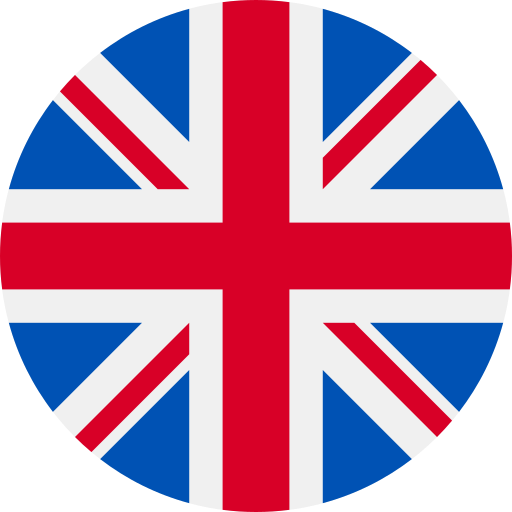
Data is critical in today’s business environment as it is essential to transform it for strategic value. This enables the strategic planning process, fine-tuning daily operations, and promoting customer satisfaction. With the introduction of AI / ML and Big data, extracting and using data has become crucial for competitiveness. This is generally achieved through the application of emerging technologies such as cloud computing for horizontal scalability, machine learning for extraction of data, and APIs for data interfacing. Enterprise web scraping can enable organizations to obtain necessary data in real time. It becomes a significant source of competitive advantage due to its ability to align with the business’s goals.
What is Enterprise Web Scraping?
Enterprise web scraping refers to the extraction of a large volume of data from websites per a particular company’s requirements. While small or individual web scraping means collecting data at smaller volumes and organizing the data from a single source, enterprise web scraping collects large volumes of data frequently from various sources. It will require powerful tools, structures, and strategies to handle mass and complicated data. The data can be used for market analysis, competitor monitoring, price trends, news, information, and content consolidation. These collected data are applicable for making smooth managerial and strategic decisions.
Key Components of Enterprise Web Scraping

Enterprise web scraping involves collecting large amounts of data from websites, social media and other sources. It becomes a vital source for transforming the data analysis process. Thus, it has a few important components that make it more critical for diverse business segments:
1. Structured Data Extraction
Data gathering focuses on collecting data such as prices of certain products, customer feedback, and current events. The gathered data is then filtered to be well arranged in CSV files or databases. Structured data is more convenient as it is easier to analyze and generate a report. Businesses can use this organized information to quickly devise different strategies based on real-time information.
2. Automation
Automation is programming the web scraping operation so that it can run for a certain period of time without being initiated by a person. This means the business is always in auto-pilot mode and getting up-to-date data. Manual data scraping would take longer to complete and cost more in terms of human resources. However, automated data collection assists in maintaining accuracy in collecting data.
3. Scalability
Web scraping processes are directly related to the scalability and capacity to process vast amounts of data. Some of these tools can extract millions of web pages in a relatively short amount of time. Scalability is important for businesses that handle data and monitor several data sources. It ensures that as the business grows, the company’s data collection capabilities are not limited.
4. Compliance
Web scraping should be done legally, strictly adhering to website scraping norms and laws that govern privacy rights. This involves ethical scraping that does not harm websites. Adherence to legal and ethical requirements ensures businesses do not find themselves on the wrong side of the law and preserve their authenticity. Both broad and specific elements of compliance ensure that data collection is done responsibly and does not present risks to persons or the environment.
5. Data Integration
Data integration is considered as necessary, which means that the collected data should be easily and seamlessly integrated with the company’s current systems, such as CRM, databases, or analytics. Data integration enables businesses to use data efficiently, making it useful in decision-making processes, customer satisfaction, and organizational performance.
How Data Analytics and Brand Monitoring Boost Business Operations?

Data analytics and brand monitoring are two primary areas that will define the future of enterprise web scraping applications. Here’s how this combination will influence businesses:
- Better Understanding through Data Analysis
Gathering large volumes of data using web scraping techniques includes data from various sources such as competitor sites, market information, and customer feedback. However, this raw data, if coupled with data analytics, can be processed and analyzed to reveal information. It assists businesses in comprehending the market trends, customer behaviors, and market opportunities that are present in the market.
- Enhanced Brand Monitoring
Businesses can track customer reviews by applying a web scraping tool that fetches information from social media, news feeds, and others. This integration will also help businesses protect their brand image by responding to negative feedback or fake news. It also enables businesses to build better relations with customers and keep their brand reputation high.
- Real-Time Decision Making
When integrated with real-time data analysis, web scraping can offer a quick understanding of market changes, competitor activities, or customer sentiments, after which businesses can respond immediately. Using the platforms will enable companies to respond swiftly to market movements, create timely marketing campaigns, alter the price of products promptly, or respond to a customer complaint.
- Predictive Analysis for the Future Action
When growing historical and real-time data is collected through web scraping, a forecasting technique can be applied to analyze future possibilities. When developing business strategies, it is important to understand customer demand, analyze changes in market trends, and be open to capitalize on them.
- Personalized Customer Experiences
Businesses can develop customized goods and services or marketing initiatives by scraping customer sentiment data. Thus, customers would prefer to deal with brands that can capture or fulfill their needs.
What are the Future Trends in Enterprise Data Scraping?

Enterprise data scraping is transforming rapidly with advancements in the market. For businesses, it is important to stay updated with the changing market scenario. Let’s analyze potential trends that can transform the enterprise data scraping process:
- AI and Machine Learning Integration
Data scraping tools will frequently incorporate Artificial Intelligence (AI) and Machine Learning (ML) into their techniques. These technologies will also assist in recognizing patterns in data without further human input, improve the accuracy and efficiency of data scraping, and adapt to change without human intervention. This means that the process of scraping the data will be smarter and less time-consuming, and this will greatly benefit businesses that require data as they will be able to get the right data they need at the appropriate time.
- Moral and Legal Responsibilities and Awareness
As laws regulating the use of personal data become more rigid, more attention will be required to the legal and ethical implications of data scraping from various sources. There are rules similar to the GDPR regarding data privacy in Europe, and businesses will have to avoid scraping content. This will keep different businesses out of the legal waters and safe from legal consequences that might tarnish their reputation.
- Real-Time Data Scraping
There will be an increasing demand for real-time information, which will inevitably result in an even greater demand for web scraping tools that allow information to be obtained as soon as it appears on the website. Real-time data allows such decisions to be made quickly, response to the changes occurring in the market faster, and outcompete competitors.
- Cloud-Based Scraping Solutions
Applications for web scraping will increasingly be based on cloud-based technology. Such tools enable companies to gather and analyze data without maintaining their own servers and other IT equipment. Cloud solutions can be easily adapted to organizational needs and are thus relatively inexpensive for handling massive data scraping requests.
- Improved Data Handling and Processing
When businesses collect more data, they will also need better means by which data is integrated and analysis can be carried out. The latest tools will facilitate data management and interpretation of collected information more efficiently and effectively. The increased integration and analysis ability allows businesses to transform their data into actionable insights to make much better decisions and a seamless strategy formation process.
- Use of No-Code or Low-Code Scraper Applications
Low code or no code software tools would be prominent as many would not require traditional coding expertise. Its use makes web scraping formation and operation within the reach of people who do not have technical skills. This will increase the data collection and utilization process by various business departments. It will break the limitation of IT personnel scraping data, making the organization more data-oriented.
Conclusion
The future trends of enterprise web scraping are mainly focused on transforming data analysis and brand monitoring processes and aligning them perfectly. As many companies realize the importance of real-time information, web scraping will develop further to offer more accurate data for making strategic decisions. Through the use of web scraping and data analytics, X-Byte assists companies in establishing a better market position to derive value from raw data. This helps them make better strategic decisions that will help them remain relevant in the market.













